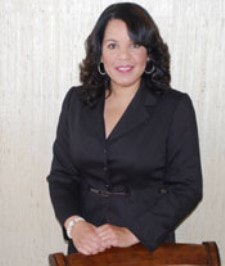 Dr. Leslie T. Fenwick
Dr. Leslie T. Fenwick“We demand that by the academic year 2017-2018, the University of Missouri increase the percentage of black faculty and staff campus-wide to 10 percent.” So reads the fifth item on the list of demands written by the Legion of Black Collegians at the University of Missouri. It’s an uncomfortable and unacceptable shame — nearly two decades into a new millennium — that the work to integrate college and university faculty and administration remains undone.
If the University of Missouri abides by the Legion of Black Collegians’ demands and is able to increase the percentage of Black faculty to near 10 percent, the university will become a national exemplar. A 2007 Journal of Blacks in Higher Education (JBHE) report shows that few of the nation’s traditionally White institutions (TWIs) have achieved such a level of diversity in the faculty ranks.
In fact among top-tier state and private universities, the University of Alabama, Tuscaloosa reports the highest percentage of black faculty at 6.8 percent. By way of comparison, here are the statistics on black faculty at other universities: Emory (6.8%), Columbia University (6.2%), University of North Carolina, Chapel Hill (5.9%), University of Michigan (5.4%), Northwestern (4.6%), University of Virginia (3.8%), The Ohio State University (3.7%), Harvard (3.1%), University of California, Los Angeles (3.0%), Yale University (2.9%), and University of California, Berkeley (2.7%).
While the report was from nearly a decade ago, it somberly concluded that with the pace of change, “it will take about a century and a half for the percentage of African-American faculty to reach parity with the percentage of blacks in the nation’s population.” And indeed, at some of those schools, those percentages haven’t moved much. For example, at the University of Virginia, Blacks today account for 3.1 percent of all faculty, according to a university spokesman, down a bit from 3.8% nearly a decade ago. At Harvard, according to the university website, in 2009 the faculty included 47 blacks and in 2013, that number had risen to only 56, out of more than 1,570.
Of course, the majority of the nation’s tenured Black faculty are at historically Black colleges and universities (HBCUs). Most earned their doctoral or other terminal degrees at TWIs, but despite these credentials, they are not vigorously recruited or advanced into the ranks of tenured faculty in large numbers at TWIs. Remarkably, 96 percent of Black tenured faculty are at HBCUs (even though HBCUs comprise only 3 percent of the nation’s 3000 colleges and universities). If HBCUs disappeared, so would the nation’s Black academics.
 H. Patrick Swygert
H. Patrick SwygertThe myth that Black Ph.D.s just don’t exist supports anemic institutional efforts at TWIs to recruit and tenure Black faculty. A 2012 National Center for Education Statistics report indicates an almost 43 percent increase in the award of Ph.D.s to Blacks, from about 7,000 in 1999-00 to slightly more than 10,000 in 2009-10. Yet the average increase in Black faculty appointments at TWIs during the same period was about 1.3 percent. Sadly, the percentage of Black faculty at the nation’s TWIs averages out to a dismal 4 percent today.
The nation’s college students benefit from learning from diverse faculty. Such interaction teaches students that all people can serve as models of intellectual authority and can provide students a visceral antidote to the myth of Black intellectual inferiority. Additionally, more diversity in the faculty ranks may offer a new range of innovative thinking and research. This notion is best summarized by astronomy professor John A. Johnson in an interview he did with Harvard University’s Crimson Magazine, “I sincerely believe that there are problems I can solve differently because of my unique background.” Johnson, an African-American in the physical sciences, became the first African-American to receive tenure from Harvard in the physical sciences in 2013.
The best plan for increasing the number of Black faculty is not convening a new diversity committee or appointing another vice president for diversity; it’s hiring more Black presidents, deans and department chairs at TWIs. Shockingly, with the exception of HBCUs, most of the nation’s colleges and universities do not have Black deans or department chairs and fewer than 30 of the 3,000 are led by Blacks. This consistent lack of diversity around the leadership table reinforces an unspoken and dangerous assumption that only White males are fit to lead. It’s time for this operating assumption to die.
At a time when women constitute almost 60 percent of U.S. college students, and minorities will soon exceed 50 percent of the U.S. population, the academy needs to accelerate progress and make way for a vital American future.
Dr. Leslie T. Fenwick is dean of the Howard University School of Education and a former visiting scholar in education at Harvard University. She is a contributor to the bestselling book, The Last Word: The Best Commentary and Controversy in American Education.
H. Patrick Swygert is president emeritus of Howard University and the State University of New York (SUNY) at Albany.
(This article originally appeared in The Washington Post.)















